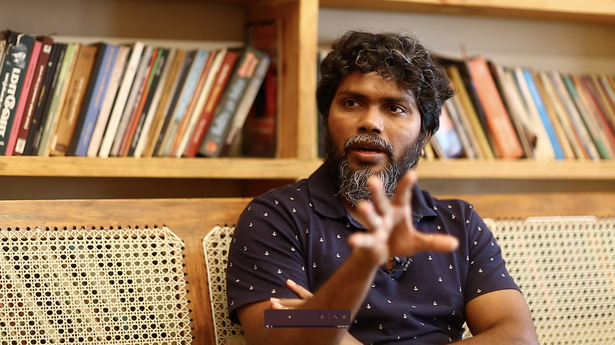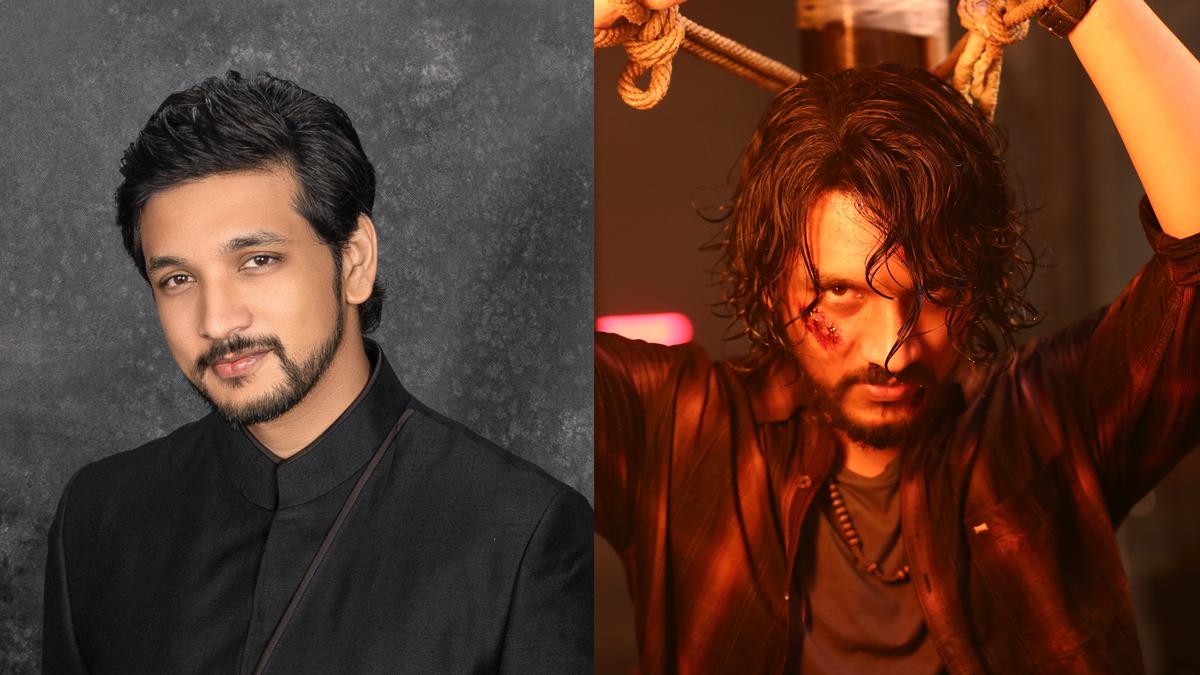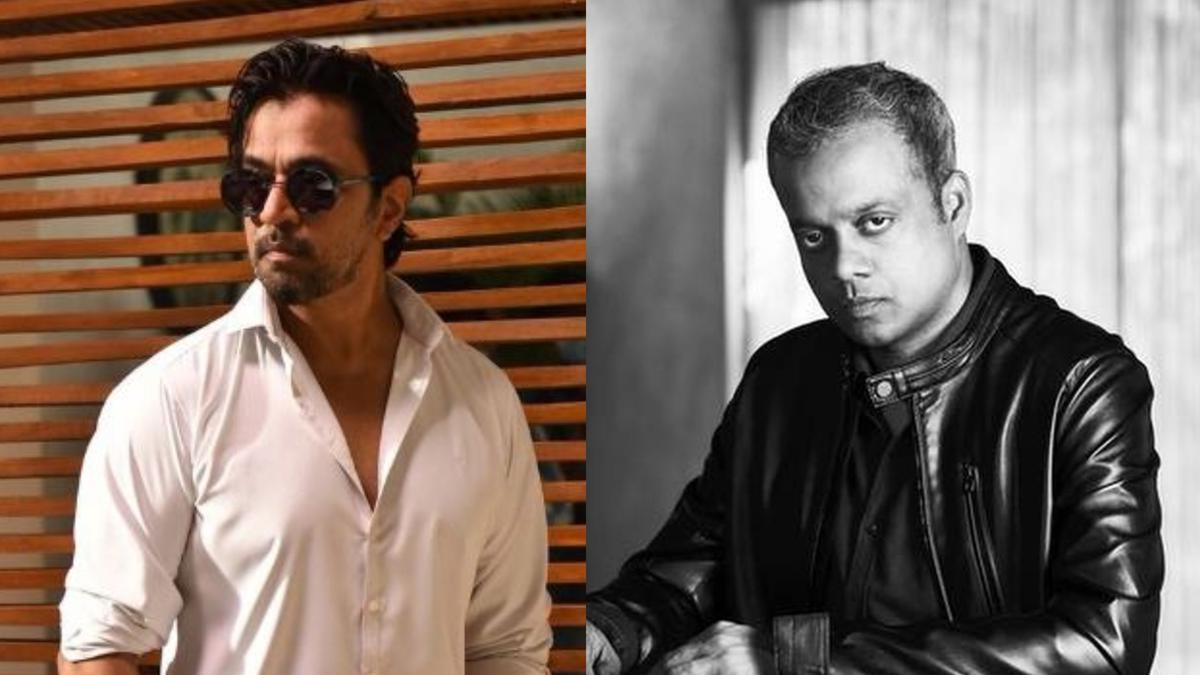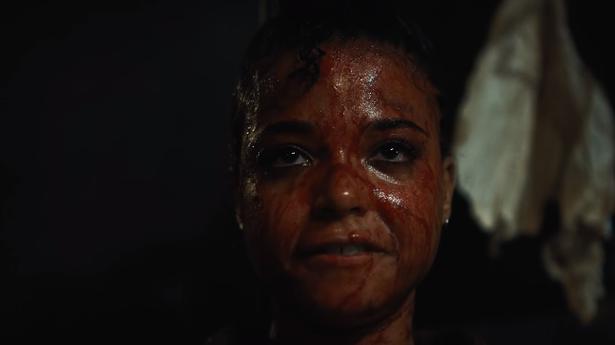Filmmaker Pa Ranjith discusses the politics of love in ‘Natchathiram Nagargirathu’ and how he has fine-tuned his craft over the years
Filmmaker Pa Ranjith discusses the politics of love in ‘Natchathiram Nagargirathu’ and how he has fine-tuned his craft over the years
“Should love exist only between a man and woman?” asks a queer character and rightly so, in the trailer of Natchathiram Nagargirathu. The sixth feature by filmmaker Pa Ranjith, who has been a towering figure in a socio-political and cultural movement in Tamil cinema, is an exploration of the idea of love and the politics behind it. Perhaps the first mainstream Tamil film to represent queer love, Natchathiram… is a film, Ranjith believes, that will make a a lot of people uncomfortable for mirroring the truth.
It started as a regular man-woman love story, says Ranjith. At one point, he gave up on the film after writing about 15-20 pages. This was around the time he watched Spike Lee’s Do The Right Thing, which sparked a conversation within, helping him finish the script. He clarifies that both these films are different. “When I watch a film, I always see what it gives me in return; is it joy or empowerment. Likewise, I want my films to reflect what I’ve felt,” says Ranjith. Excerpts from an edited interview:
Congrats for ‘Dhammam’ [from the anthology ‘Victim’] and for completing 10 years in the industry. Yours is an important journey in Tamil cinema for various reasons. How do you see the last decade?
When I came to the industry, they used to make movies in film reels. The digital transformation was simultaneously happening. Attakathi [his debut film] was shot on a digital camera. Back then, there was a belief that if you shoot in digital, it won’t run. Attakathi broke that. The digital era has given rise to OTT platforms now. Filmmaking has become easy today. Earlier, even if you had to release a poster, you needed to go through multiple channels. You can reach the audience directly today, thanks to social media.
I see a big change in terms of content as well. Talking about the lives of Dalits was not appreciated earlier, nor was it commercially viable. But today, there is a space in mainstream cinema. I see that as an important change. Youngsters and even big commercial directors have started to address caste, patriarchy among others things. Things have opened up to have a discussion today.
A change that you see in yourself as a filmmaker?
I think I’ve got clarity in terms of craft. When I made Attakathi, I didn’t know much about the craft, although I was confident as a storyteller. The film didn’t have consistency as far as the craft was concerned. I think I’ve cracked that now. I achieved that somewhat in Kaala. But with Sarpatta Parambarai, I delivered what I had in mind — whether it was in terms of writing or staging. This later happened with Dhammam and now in Natchathiram Nagargirathu.
Did this idea come to you during the lockdown?
No. Right after Kabali, I wanted to do a small film in Natchathiram... But the reviews I got for Kabali pushed me to do Kaala. I had a rough draft and in fact, fixed the title back then. The plot was fixed but the story I wanted to tell kept changing in each draft. The film today is not what it was when I wrote it during Kabali. Then I revisited Natchathiram… during the lockdown.
I didn’t want to write a regular love story between a man and a woman. So, I started exploring the love stories that are around us. This is not a film about queer love but queer characters are there in the film. They all come together to create a theatrical play which is against caste and honour killing. In Tamil Nadu, there is a big discussion on nadaga kadhal. This film talks about that and discusses the politics of love. My friends who read the script felt it was refreshing. But they had questions like: “Will the audience accept it?”
There are two strong elements in Natchathiram…: visuals and dialogues. It is a dialogue-heavy film; the context of the conversation itself will create a discussion among audiences.
Pa Ranjith with Dushara Vijayan
| Photo Credit: Special Arrangement
Be it ‘Sarpatta Parambarai’ or ‘Natchathiram Nagargirathu’, your films deal with so many characters getting their own individual arcs. Does this come naturally to you?
There are three dominant characters in this film: Rene, Inaiyan and Arjun. I started the film with them. But when I finished writing it, a lot of new characters started coming in. Because it has a theatre backdrop, we needed a mentor. Then came a transgender character and we wanted her to have a pair. The story is set in Pondicherry, so there is a French girl. Because of her, there’s a character called Shekar. In the earliest drafts, they might have come for a couple of scenes. But when I rewrote it, they became full-fledged characters. You go after something in the first draft and then when you discover the core idea, you get some clarity.
Was this a different writing experience for you?
No, this is how I write for all my films. For example, in Sarpatta, Vetriselvan’s character [played by Kalaiarasan] was initially called Sivan and he was supposed to be a big-shot gangster. Both Vetri and Kabilan [Arya] were Rangan’s sons in the first draft. But after I finished writing it, that wasn’t necessary. So I made Kabilan a separate character. I gave my scripts to a few people asking for feedback. The script goes through changes after every reading. .
Are you someone who prefers everything on paper or do you write on the set?
I don’t have a presence of mind on the set [ laughs]. But during the filmmaking process, I’ve learnt to strengthen characters. Sometimes an actor may give you something that may not be on paper. And you make a decision based on that. Other than that, everything has to be on paper.
Can you give an example of a character you strengthened?
There are so many. Vetriselvan is one. In fact, Kabilan too. Only after finishing it did I understand Kabilan’s purpose. I wrote him as a quiet character but very observant. He is an underdog from the slum. But if you look at Sarpatta, it broke many stereotypes including how a slum should be. A friend of mine also asked that we don’t know where Kabilan comes from. But there are shots here and there. Normally, they would create a backstory for an underdog who everybody wants to win. Even though there were chances, I avoided it.
Rangan Vathiyar [played by Pasupathi] is another example. Because I felt his character was weak, I shot a lot of scenes to make him appear strong. But I removed all those scenes at the edit, since I felt the character itself was powerful.
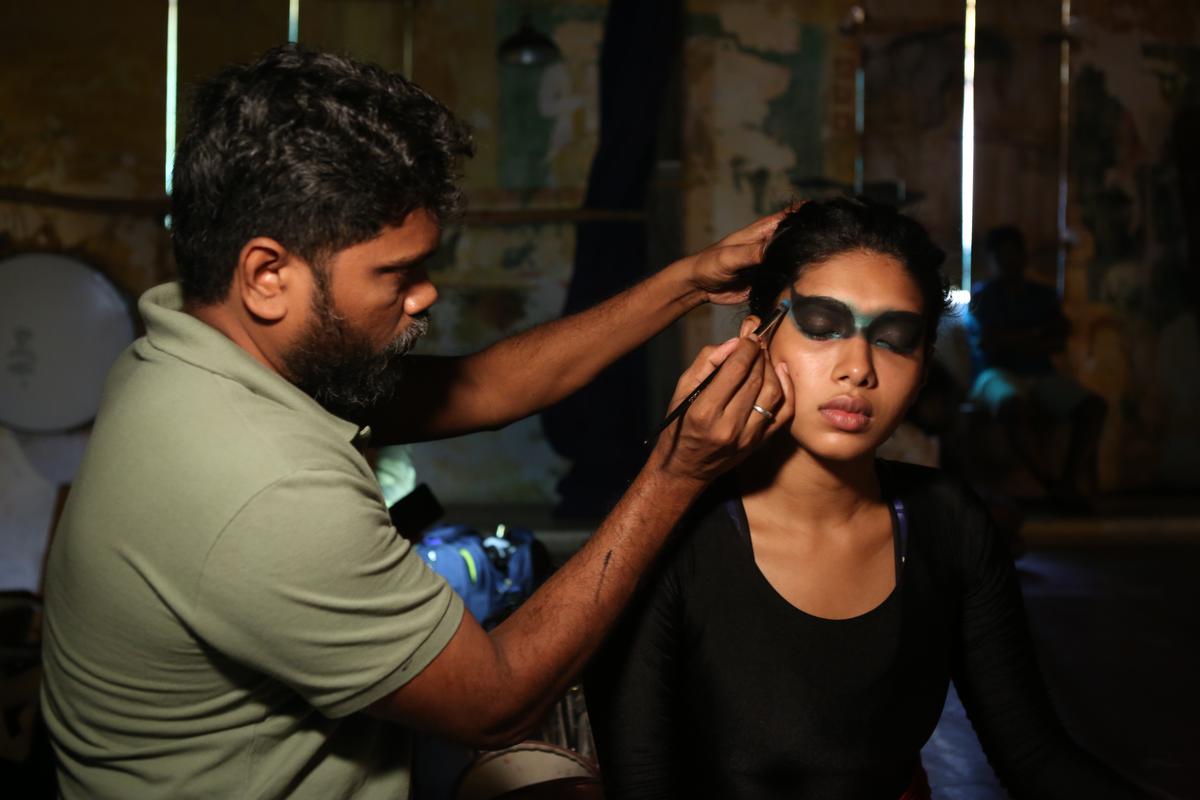
Pa Ranjith on the set
| Photo Credit: Special Arrangement
‘Natchathiram…’ looks unlike any of your films. Whether in terms of the use of colour or music, this film looks fresh. Would you say it was a new experience for you as well?
This wasn’t exactly new to me. I don’t want to make ‘experimental’ films. I don’t even like the word starting from my college days. This film demanded far more from me since it’s based on love. What is love but a feeling? I wanted to show the idea of love through colours. For all my films, I prepare a chart for the colour pattern. So far, in my films, I have used the colours of Paul Gauguin’s work. Gustav Klimt is another artist I admire. He has romanticised love and its various facets in all his paintings. I have used some of his colours in this film. In that sense, you can say that Natchathiram… is a little different from my other work. So far, all my films have operated in the commercial realm, so there were compromises sometimes. I didn’t have all that pressure this time. Natchathiram… was an opportunity to showcase my artistic prowess.
Because you mention painting and you’re a Fine Arts graduate, have you ever thought about storyboarding?
That’s how I came into this industry. I used to storyboard for Venkat Prabhu sir’s films. There was a short film I was working on for which I storyboarded. It was about how knowledge is such a burden on children. The film never took off. My upcoming film [yet-untitled with Vikram reportedly on the Kolar Gold Fields] needed storyboarding and it’s in the works.
You have known Tenma for a long time. As a music composer, what is the quality you like about him?
I always like unique sounds. I like the sounds we create from life and I also like the fusion of western music with ours. I’ve known Tenma from the Casteless Collective days; he has produced a lot of music for us. If you look at those songs, they were interesting in the sense that they would have the tone of a campaign but at the same time, the songs were away from the audience. But Casteless Collective broke that perception indie songs had. This is what I like in Tenma and wanted to work with him. Natchathiram… demanded unique sounds because it revolves around contemporary artists. I didn’t want a mainstream composer for this film. Otherwise, it would have become a cinema album. I wanted it to have an indie feel.
At the audio launch, Vetri Maaran said this film speaks for representation. Were you at all anxious about representing the queer community?
As I said, this film is not about them but about caste and honour killing. That said, I am anxious all the time. Even while writing this, I felt that it was going to make a lot of people uncomfortable. Speaking the truth is always powerful. Which is why speaking the truth means you’re going against a few people. It is going to create a jolt but at the same time, it is important to have this discussion.
Natchathiram Nagargirathu releases in theatres on August 31.


